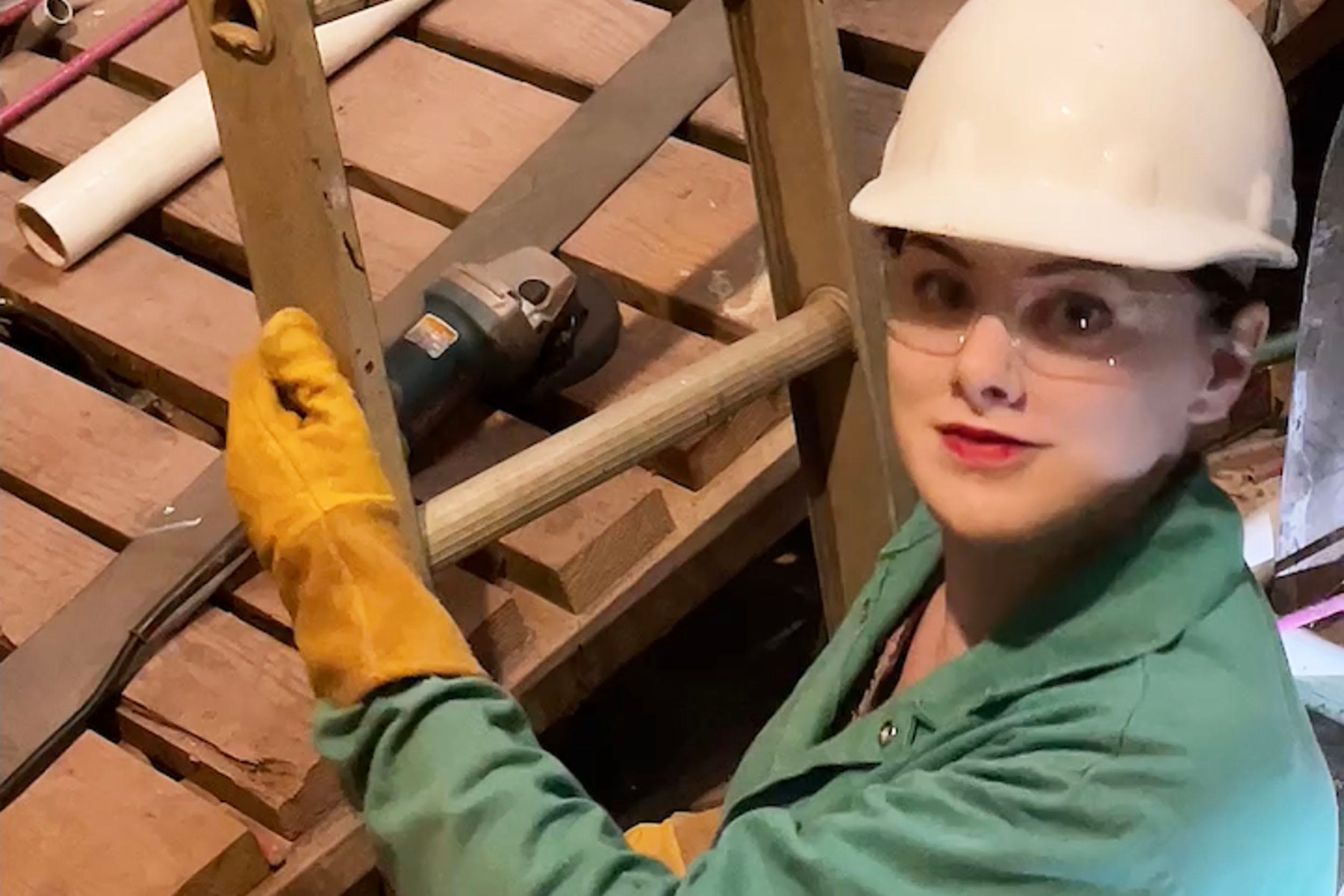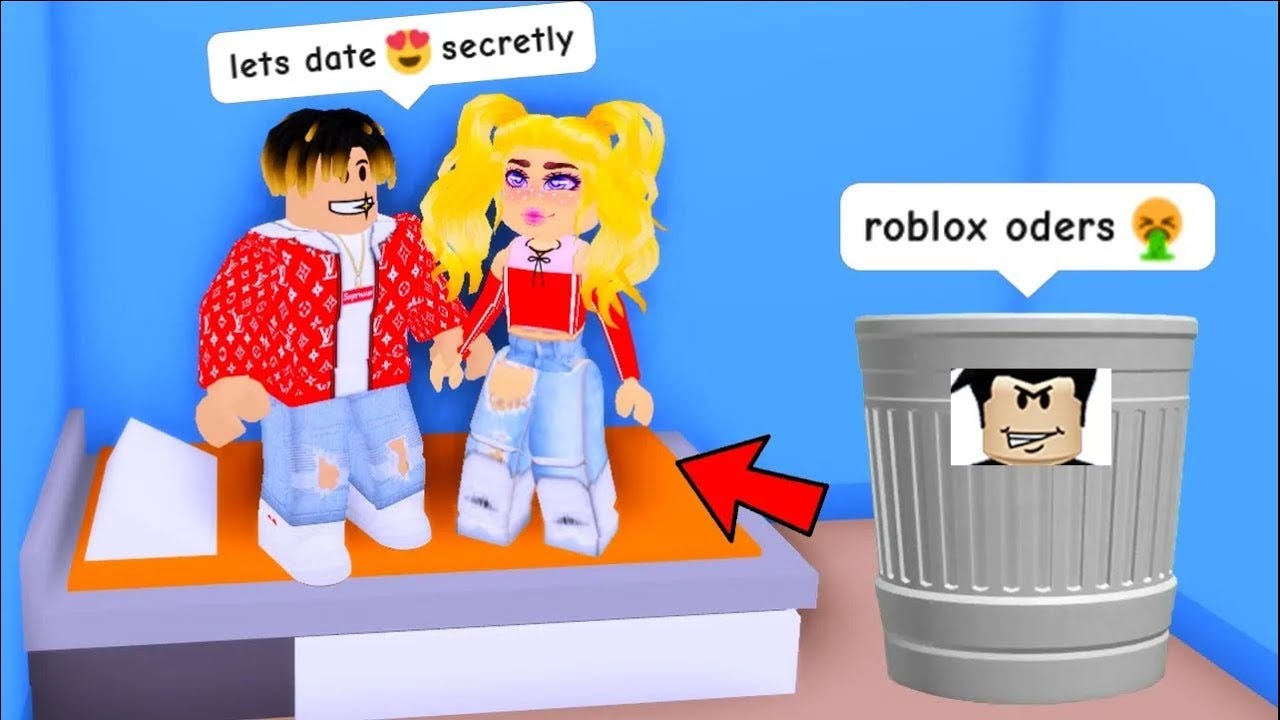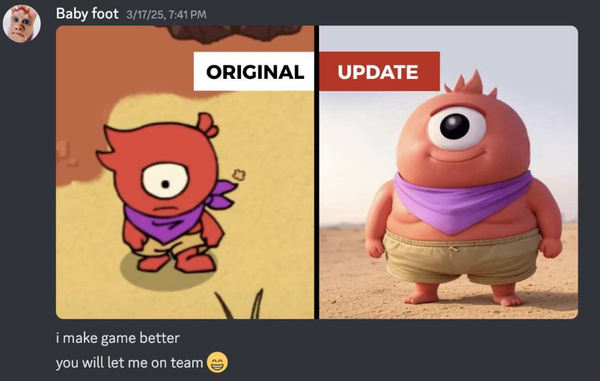Inactive worlds
Also: virtual explorers, tactical cosplayers, and Caillou.

EX is a research report about where culture is headed. You can learn more here. This week we’re looking into the abandoned worlds and forsaken animations that were somebody’s childhood — just not ours.
1. Virtual urbex is still going strong in 2024
Vinny from Vinesauce spent New Year’s Eve exploring long-abandoned worlds on the defunct Playstation Home service, a corporate metaverse from the PS3 era. Sites visited included Clearasil High School, Red Bull Beach, and the E3 2011 Expo Hall. Though PS Home went offline in 2015, it’s been recreated through Destination Home Online, a project that uses “donated” Playstation Home cache data and files retrieved from used PS3s to rebuild the achingly 2010 environments and minigames made by devs like Irem back in the day. These experiences still have dedicated fans; one Vinesauce chatter said they’d been paid to recreate PS Home’s Sodium games in VRChat.
Exploring dead virtual worlds is a cottage industry on YouTube. Videos investigating forgotten maps and servers strike an algorithmically appealing balance between nostalgia, gaming trivia, and eerie desolation. Vinny has an interesting history as the star of the most famous virtual exploration video: in 2016, he was wandering around the empty 1995 MMO Activeworlds when he unexpectedly encountered another player (“Hitomi Fujiko”) who freaked him out by RPing as a tutorial NPC in a creepypasta-ish style. The player later came clean on Reddit.
2. Exploring the long, strange history of GoAnimate
GoAnimate is one of those “this was my childhood” things that’s hard to explain to anyone who wasn’t in a school computer lab at the right time. As a tool for making low-quality animated sketches that resemble knock-off Family Guy non sequiturs, its functionality hasn’t changed much since 2007. But throughout the mid-2010s, its community underwent a cultural revolution, shifting toward meme templates and increasingly obsessive references to Caillou.
GoAnimate initially worked as a video-sharing platform that let users create and distribute animations from their browser with a simple drag-and-drop interface. As early GoAnimate videos illustrate, the platform’s inherent jank — stiff animations, deadpan text-to-speech dialogue, and limited assets — was always part of its charm.
In the early 2010s, formats like “[X character] gets grounded” and “[X character] misbehaves at [Y fast food restaurant” took off. A user named African Vulture introduced Caillou to the mainstream GoAnimator vocabulary in 2014, popularizing the use of children’s characters across the scene. Google Trends indicates that searches for GoAnimate reached their peak around this time, driven by an emerging culture defined by meme templates and in-jokes. GoAnimate projects also got more ambitious after the 2014 boom, often reaching feature-length runtimes.
Though Adobe Flash’s discontinuation in 2020 marked the end of a GoAnimate era, fan projects like Wrapper: Offline and FlashThemes have preserved the tools needed to recreate the GoAnimate aesthetic. Meanwhile, the GoAnimate corporation has rebranded as Vyond, repositioning their product as a tool for generating animated business presentations. It seems like a sensible business decision, but if the goal was to distance Vyond from GoAnimate’s online culture, they might be fighting an uphill battle.
3. Tunnel lady discourse reaches the end of the line

TikTok and Twitter are divided over tunnel lady. The Virginian woman who runs the TikTok account @engineer.everything (“Kala”) had been constructing a shelter underneath her property for more than a year before local officials shut the project down late last month. A recap video posted last October shows the lengths Kala went to bring her project to fruition: fabricating an elevator to transport materials, rigging a pump system to keep the tunnel dry during construction, etc. Despite being self-taught, she shares videos that foreground her supposed engineering expertise. Until recently, reception to her videos was largely positive, with fans commending her for being driven and auto-didactic.
Since the project went viral, however, users on Twitter and Reddit have pointed out that Kala isn’t actually an engineer by profession, likely lacks the permits she’d need for city approval, and tends to dismiss the safety concerns of her migrant neighbors. One Redditor claims that she ripped up a letter from the HOA during a livestream, while another claims that she at one point intended to build a castle — complete with a crocodile-filled moat — using the stones she’d mined.
Like letters to advice columnists or r/AmITheAsshole posts, the controversy functions as a Rorschach test: depending on the commenter, tunnel lady is either an anti-establishment icon or a menace to society. It’s a culture war between girlbosses and poindexters, between “let people enjoy things” and “well, actually.” Meanwhile, a small contingent of Reddit users can’t keep themselves from busting out the calipers and scrutinizing her race and neurotypicality. It’s hard to side with Kala fans, though — a recent video where she tries to fix a living tree with wood glue doesn’t inspire confidence in her engineering ability.
4. Three big YouTubers are sorta, kinda, maybe quitting
At the start of the new year, three high-profile YouTubers announced that their channels are taking a break. Edutainment titan Tom Scott (6.3M subs), comedy shorts guy Joel Haver (1.9M subs), and animator MeatCanyon (6.7M subs) all said they were ending their regularly scheduled weekly or biweekly content. Many viewers had the same question as this redditor: why are guys who “made it” — people in the top 0.1% of YouTubers — walking away from a successful format?
Each gives a different reason. Scott seems to love his job but not love weekly deadlines; Haver wants to do better longform work; MeatCanyon doesn’t seem to actually like the topical videos that made his channel blow up. But the announcements have a similar feel. They all seem hyper-aware of the history of YouTuber burnouts and designed to head off “whatever happened to…” speculation. They all make the cool-headed decision to announce at the start of the new year rather than impulsively scale back at a time that could impact sponsors. And they’re all only really quitting their self-imposed deadlines, so maybe they’re being dramatic for the sake of a good title.
5. New AI game unleashes pent-up theater kid energy
In Suck Up, you play as a vampire trying to talk your way into the homes of cartoon characters in the suburbs. The hook is that they’re all AI NPCs and you use your mic to actually speak to them. It’s been getting a lot of play from creators who like the improv angle and enjoy messing with the AI to see what it can remember and react to. Suck Up looks a bit more like a real game than previous runs at the concept (Yandere AI Girlfriend Simulator and laggy mods for Skyrim and Mount & Blade), but it also looks like streamer bait that people will only play in front of an audience.
6. 🚨Actor Awareness Alert🚨
Lewis Saunderson wants to raise awareness. His eyes glisten with tears; his throaty bellow is wet with despair. He wants you to be aware that his wife is sleeping with his dad, that his toddler drowned while taking a bath unsupervised, that his parents lied about him being adopted until he was 38 — in fact, most of the things that deserve more awareness seem to involve horrible things happening specifically to him and his family. The formula works, earning Saunderson massive engagement-awareness from videos about breaking up with fictional girlfriends or finding his daughter’s corpse in a tunnel, which went viral on Twitter and TikTok.
Saunderson describes his videos as “Actor Awareness Videos” in his channel bio, but they resemble the work of other Dhar Mann-style creators. Just devise an outrageous or obscene scenario, frame it as a moral lesson, and watch the view count soar. Despite tagging videos with “#awareness,” Saunderson doesn’t do social commentary; “issues” like infidelity, assault, or murder are only vehicles for hyperbolic performances of grief and shock. This becomes more obvious once you realize that he frequently reposts footage with different captions to milk his biggest emotions for all they’re worth.
7. Square’s NFT game continues to mystify the few who notice it
After many bizarre trailers (including SYMBIOGENESIS keyword teaser vol.1【Normies】), Square-Enix’s “narrative-unlocked NFT entertainment” game rolled out on Dec. 21. The combination of JRPG walls of text, NFT mechanics, mobile game reward structures, and machine translation has made Symbiogenesis one of the most convoluted entertainment launches of all time. It even has its own “a lotta yall still don’t get it” thread. Twitter user/irony vtuber @mommilph posted a useful breakdown of the game’s I Spy format and NFT-holder decision points, concluding that it’s “a low budget project hoping to bank off a couple of whales…then write it off as them accomplishing a crypto game.” But why did they make so many floaty videos about “Damage caused by Dragon” and “Rumors of a certain race”?
YouTube Thumbnail of the Week

Chum Box
- The Rock made an Instagram post documenting his “first ever” visit to In-N-Out, but was then exposed as a literally huge liar. He edited the post to say he “forgot” his two previous In-N-Out videos.
- A Welsh tavern blasted Smashing Pumpkins frontman Billy Corgan for failing their Lighthouse Burger Challenge in November. But the man in their photo isn’t the real Corgan, who’s vegan anyway.
- Playboi Carti’s last album was essentially a concept record about being a vampire, so it makes sense that his newest video takes place in and is called “BACKR00MS.”
- This clip of Taylor Swift’s “Stay Stay Stay” took many non-Swifties by surprise, inspiring comparison to the royalty-free muzak of Roblox tycoon games.
- Evidence from Midjourney’s ongoing copyright lawsuit suggests that its model gets its understanding of art styles from a database of more than 16,000 artists used without permission.
- @simmerstok posts modded Sims mad science videos like “breeding out the Grinch” and “Demon Boy vs Disney princesses.”
- Is it true that a Homer AI cover account is “more entertaining and elicits the same emotional response that Ready Player One was aiming for”? People are still enjoying it three months later, at least, which is more than you can say about RPO.
- Six years ago, Japanese Rainbow Six Siege fans at Comiket 93 cosplayed as the “Niji Six Sentai.” (Google Translator’s note: Niji means “rainbow.”) The clip was boosted by Ubisoft’s official accounts and seems to have inspired the villains of the company’s divisive Captain Laserhawk cartoon.
That’s it for this week. Next week we’ll finally stop confusing Billy Corgan and Jimmy Corrigan.






